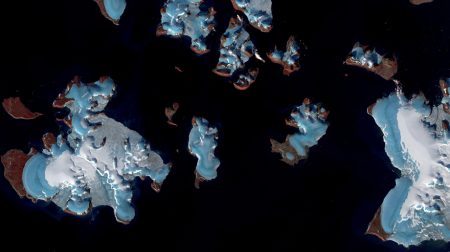
April 9, 2019 – “Glacier mass loss may be larger than previously reported” state the authors of a paper published in the journal Nature this week. The estimated loss amounts to 9.6 trillion tons of ice between 1961 and 2016, and has contributed 27 millimeters to sea level rise during that time period. Biggest contributors have been the glaciers of Alaska, Patagonia, and the Arctic, with lesser contributions from the European Alps, Caucasus and New Zealand.
The methodology used to determine the ice loss includes two sources: glaciological field observations, and digital measurements of ice thickness by satellites capable of doing geodetic measurements. States Michael Zemp, Glaciologist at the University of Zurich, and lead author of the study, “By combining these two measurement methods and having the new comprehensive dataset, we can estimate how much ice has been lost each year in all mountain regions since the 1960s …The glaciological measurements made in the field provide the annual fluctuations, while the satellite data allows us to determine overall ice loss over several years or decades.”
The study notes mass loss has increased in the last three decades with current annual losses amounting to 335 billion tons of ice. That’s equivalent to the ice volume found in the European Alps and is accounting for up to 30% of global sea level rise.
The report follows NASA published results appearing in Nature Geoscience last month about the thickening and growth of Greenland’s largest glacier, the Jakobshavn, which seems to be in direct contradiction to the University of Zurich published results of dramatic ice mass loss. In fact, NASA’s Josh Willis, an oceanographer at the Jet Propulsion Laboratory notes that the ocean is playing a role in the behaviour of glaciers. In the case of the Jakobshavn, the nearby ocean has been cooling by as much as 2 Celsius (3.6 Fahrenheit) since 2014. Why? An influx of cold Atlantic Ocean water has penetrated into the area near the glacier. This is deemed to be part of a 20-year natural cycle of warming and cooling for the Atlantic in Greenland waters.
Jakobshavn represents 7% of the entire Greenland ice sheet. Scientists note that although it is growing, much larger ice losses elsewhere on the island point to an overall mass loss. The reversal of Jakobshavn from being the largest discharger of glacial ice to renewed growth gave climate change skeptics the ammunition they needed to come out of the woodwork and deny that global warming is real. But NASA researchers have pointed out that climate change doesn’t follow a straight line. That means a glacier may start to melt, then stop and grow again based on local conditions.
The NASA scientists believe there are likely other Arctic glaciers experiencing some growth, not just Jakobshavn. But that doesn’t alter the fact that the warming atmosphere over the Arctic (twice as fast as previously thought based on the latest Canadian study) isn’t impacting ocean surface temperatures overall which are further contributing to changing patterns of precipitation over the Greenland ice sheet further contributing to ice mass fluctuations. University of Alaska’s Martin Truffer believes that warmer air and water temperatures may even play a more role in Jakobshavn’s retreats and growth spurts. He is quoted in a National Geographic article stating, “What’s important to know is that these glaciers can react much more rapidly to short-term change in temperature. We used to think these ice sheets were pretty slow in reacting but this shows that you can have really fast reactions of glaciers to climate.”
The NASA report despite talking about Jakobshavn’s growth, however, concludes that this is only happening at the edge of the ice sheet where it meets the ocean. The rest of the glacier is thinning and contributing to overall sea level rise. The new knowledge gained from observing Jakobshavn is that oceans play a more important role in continental ice mass loss in the Arctic and Antarctic than previously thought. Expect climate modeling to be further refined to take this into consideration as we track global warming and its impact on the planet.








